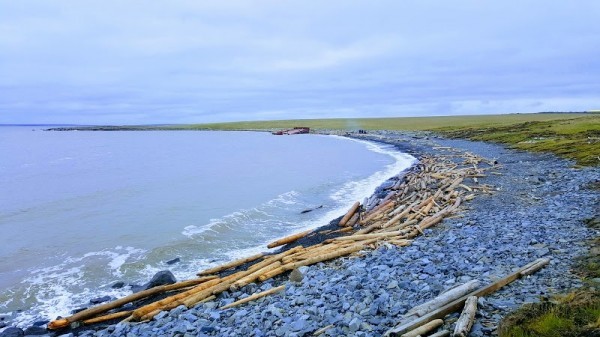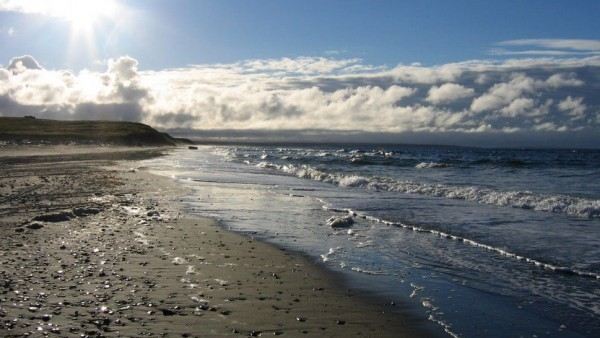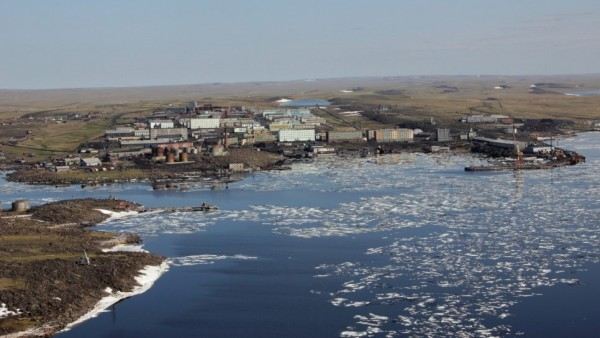Search for cities, countries, lakes and rivers
Kara Sea

, Russia © Алексей Сергеев
Kara Sea Water Temperature: Current & Historical Data for Coastal Resorts
We find every spot where you can swim and tell you what the water temperature is there today and throughout the year
Current water temperature
-0.3°C
minimal
0.9°C
average
3.2°C
maximum
Graph of Water Temperature Changes in the Kara Sea Over the Last 60 Days
Water temperature in the Kara Sea by month
| Month | Minimum | Maximum |
|---|---|---|
| January | -2°C | -1°C |
| February | -3°C | 1°C |
| March | -3°C | 1°C |
| April | -3°C | 1°C |
| May | -2°C | 1°C |
| June | -2°C | 1°C |
| July | -2°C | 4°C |
| August | 0°C | 11°C |
| September | 1°C | 9°C |
| October | -2°C | 6°C |
| November | -2°C | 2°C |
| December | -3°C | 1°C |
What is known about the Kara Sea?
 , Russia © www.pinterest.com
, Russia © www.pinterest.comThe Kara Sea, located in the Arctic Ocean, lies to the north of Siberia and is known for its cold and icy waters. Due to its polar location, the water temperature in the Kara Sea is extremely low year-round. In winter, coastal water temperatures range from 28–32°F (-2 to 0°C), with large parts of the sea becoming covered in ice. In summer, the surface water can warm up slightly, reaching around 34–41°F (1–5°C), but it remains close to freezing even during the warmest months.
Swimming in the Kara Sea is highly impractical due to its frigid temperatures. Only the most experienced cold-water swimmers might attempt a very brief swim, but such conditions can lead to hypothermia very quickly. The region is generally not considered a destination for recreational swimming. The sea is more often explored for scientific research and arctic expeditions, where access to the sea is typically by icebreaker ships. For most people, the Kara Sea offers a harsh and inhospitable environment for swimming, but its stark beauty and isolation make it a unique part of the Arctic.
List of Countries Bordering the Kara Sea
Popular Resorts of the Kara Sea with the Warmest Water Today
Popular Resorts on the Kara Sea Coast

, Russia © belomortrans.ru
Nearest Seas and Oceans
Frequently Asked Questions About the Kara Sea
What is the water temperature in the Kara Sea right now?
The water temperature in the Kara Sea today ranges from 32°F (-0°C) in Mys Kamennyy (Russia) to 32°F (-0°C) in Mys Kamennyy (Russia).
Is it possible to swim in the Kara Sea?
Swimming in the Kara Sea is extremely difficult due to its freezing cold waters, making it unsuitable for recreational swimming.
In which month does the Kara Sea have the highest and lowest water temperatures?
The highest water temperature in the Kara Sea occurs in August, reaching 52°F (11°C), while the lowest is in February, dropping to 27°F (-3°C).
Is the Kara Sea colder than the Barents Sea?
Yes, the Kara Sea is slightly colder than the Barents Sea, as its average annual water temperature is 34°F (1°C), while the Barents Sea's is 39°F (4°C).
Which countries are washed by the Kara Sea?
The Kara Sea washes Russia.
Do you have any extended or additional information about the Kara Sea?
The sea is limited by the northern coast of Eurasia and the islands: Vaigach, Novaya Zemlya, Franz Josef Land, Severnaya Zemlya, Geiberg. In the northern part of the sea there is Vize Land - an island, theoretically discovered in 1924.
The Kara Sea is located mainly on the shelf and has many islands. Depths of 50-100 meters prevail, the maximum depth is 620 meters. Full-flowing rivers, the Ob and Yenisei, flow into the sea, so the salinity varies greatly. The Taz and Pur rivers also flow into the Kara Sea.
The Kara Sea is one of the coldest seas in Russia, only near the mouths of the rivers the water temperature in summer is above 0 ° C. The water temperature near the sea surface in winter is close to -1.8 ° C, that is, to the freezing point. Water in shallow water areas is well mixed from surface to bottom and has the same temperature and salinity (about 34 ppm). Warmer waters from the Barents Sea penetrate into the troughs, therefore, at depths of 150-200 meters, a layer with water temperatures up to +2.5 ° C and salinity of 35 ppm is found in them.
